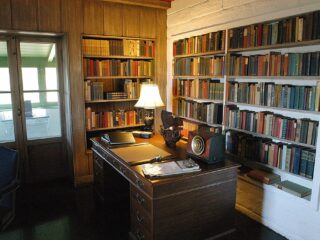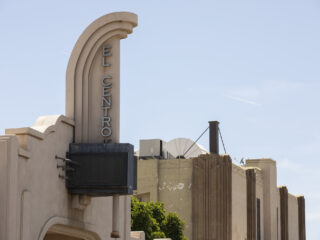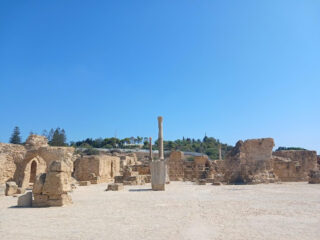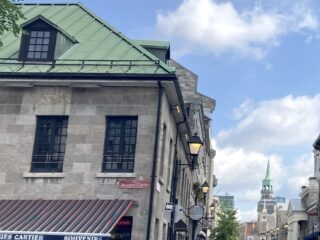Dear Charley – You wanted to know the decision on Hemingway: We took it, – with misgiving. There was of course a great [question]. I simply thought in the end that the balance was slightly in favor of acceptance, for all the worry [and] general misery involved.
In May 1926, Maxwell Perkins, the now infamous Scribner’s editor who worked with both Hemingway and Fitzgerald, wrote a letter to Charles Scribner explaining both his doubts and eventual acceptance of Hemingway’s first novel, The Sun Also Rises. Subsequent letters would circulate between Hemingway, Fitzgerald and Perkins now allowing for a more complete view of the revision process and how Sun evolved into the novel it is today – as well as the important role F. Scott Fitzgerald played in that process.
Fitzgerald and Hemingway first met in April 1925. At the time, Hemingway, who had been working as a journalist, had only published a handful of stories and poems, a total of eighty-eight pages. Fitzgerald on the other hand was the author of three published novels, two short story collections and countless individual stories. The meeting between the writers led to a tumultuous friendship often characterized by insecurity and jealousy – a friendship that would affect not only the two men, but their writing as well.
As the senior writer, Fitzgerald’s commitment to Hemingway went far beyond friendship. In the coming months and years, Fitzgerald counseled Hemingway, served as his agent, ensured his association with Maxwell Perkins and Scribner’s, and acted as a buffer between Hemingway’s rough exterior and the outside world.
Perhaps the most significant thing Fitzgerald did for Hemingway was to edit a much less-publishable The Sun Also Rises, helping to pave the way for Hemingway’s prolific writing career.
“I’m hoping to hell you’ll like [The Sun Also Rises]. I think maybe it is pretty interesting.” In April 1926, Hemingway wrote to Fitzgerald expressing that his novel was ready to be shipped to Scribner’s, and seeking Fitzgerald’s opinion of the novel. Since both men would be vacationing in Antibes that June, Hemingway offered to bring a copy of Sun and told Fitzgerald he would “welcome [Fitzgerald’s] advising [him] or anything about it.”
As Hemingway’s sponsor with Scribner’s, Fitzgerald had a considerable investment in the success of The Sun Also Rises. Upon his first read of Sun, Fitzgerald, a seasoned professional with a talent for revision, realized the book was not yet ready for publication. Fitzgerald’s critiques were delivered to Hemingway in the form of a ten-page handwritten letter that alternated between criticism and praise. He began the letter, “Nowadays when almost everyone is a genius, at least for a while, the temptation for the bogus to profit is no greater than the temptation for the good man to relax. This should frighten all of us into a lust for anything honest that people have to say about our work. Anyhow I think parts of Sun Also are careless [and] ineffectual. I find in you the same tendency to envelope in mere wordiness an anecdote or joke that casually appealed to you, that I find in myself in trying to preserve a piece of ‘fine writing.'”
Fitzgerald felt the first chapter gave an impression of “condescending casualness,” which betrayed the maturely ironic voice of the narrator throughout the remainder of the novel. “When so many people can write well [and] the competition is so heavy I can’t imagine how you could have done these first 20 pages so casually. You can’t play with people’s attention. From p. 30 [in the original proof] I began to like the novel but Ernest I can’t tell you the sense of disappointment that beginning with its elephantine facetiousness gave me. My advice is to [cut the novel] not by mere paring but to take out the worst of the scenes.”
Fitzgerald continued with his letter, pointing out “about 24 sneers, superiorities, and nose-thumbings-at-nothing that mar the whole narrative,” and what he considered to be a false start to the novel. There were glib statements, maladroit paragraphs, descriptions that could be found in guidebooks, unnecessary character information and flat anecdotes.
True to his word, Hemingway had already shipped the proof to Max Perkins, causing Perkins to inform Charles Scribner that the novel had been accepted “with misgiving.” Perkins understood that Hemingway could be difficult to work with during the revision process, and thus focused on praise of the novel, while downplaying the possible changes that would become necessary before publication. In May 1926, Perkins wrote to Hemingway, “The Sun Also Rises seems to me a most extraordinary performance. No one could conceive of a book with more life in it. There are one or two things I shall bring up in connection with the proof, but there is no need to speak of them here.”
At the same time Fitzgerald was writing his ten-page critique of Sun, a letter from Perkins citing his own critiques, was crossing the ocean. Perkins wrote, “Dear Scott – when you think of Hemingway’s book you recall scenes as if they were memories. The art is marvelously concealed, [and] yet the whole is composed to the last word. Yet the book is not an unmixed pleasure because it is almost unpublishable.”
By the time Fitzgerald received the letter, he had already shared his opinion with Hemingway and the manuscript was on its way to becoming in Perkins’ term, “publishable.”
Fitzgerald’s critiques were taken to heart and Hemingway decided rather than cut down the chapters to eliminate the first 16 pages entirely; the published version of Sun, beginning with “Robert Cohn was once middleweight boxing champion of Princeton” was page 17 in Hemingway’s original version of the novel. With Fitzgerald’s edits incorporated, The Sun Also Rises was enthusiastically received, paving the way for Hemingway’s prolific writing career.
It is unfortunate that what most people know of the relationship between Fitzgerald and Hemingway is gleaned from A Moveable Feast, Hemingway’s memoir of Paris in the 1920s. In this memoir, Hemingway gives the impression that Fitzgerald had no influence whatsoever on the editing of The Sun Also Rises. “The fall of 1925 [Fitzgerald] was upset because I would not show him the manuscript of the first draft of The Sun Also Rises. Fitzgerald did not see it until after the completed rewritten and cut manuscript had been sent to Scribner’s at the end of April. I did not want his help while rewriting.”
While it is true that Fitzgerald did not see the manuscript until it had been sent to Scribner’s at the end of April 1926, Hemingway omitted vital details including the fact that he not only sought Fitzgerald’s opinion, but also incorporated nearly all of his suggestions before the final proof of the novel was cut.
Fitzgerald and Hemingway were close during those first years of friendship. As Hemingway’s literary career continued to prosper, he became increasingly resentful of those peers who had originally helped to propel his star: Gertrude Stein, Ezra Pound and especially Fitzgerald took the brunt of Hemingway’s cutting words.
Fitzgerald never sought credit for the excisions that markedly improved Sun. Only from the letters between Hemingway, Perkins and himself do we know the truth. Until his death Fitzgerald continued to refer to Hemingway as “the greatest living writer of [his] time.”
While Fitzgerald was never as famous in life as Hemingway, a revival of Fitzgerald’s writing came shortly after his death in the early 1940’s. The Great Gatsby came to be known as the great American novel, an honor that most likely aroused Hemingway’s adversarial instincts, leading him to print statements about Fitzgerald, which he knew to be untrue. Two decades after Fitzgerald’s death,








